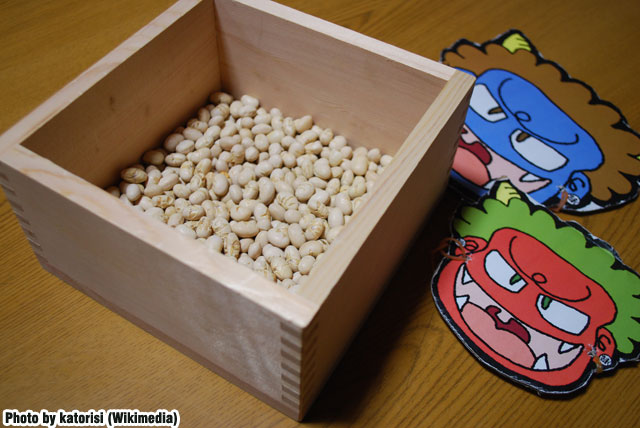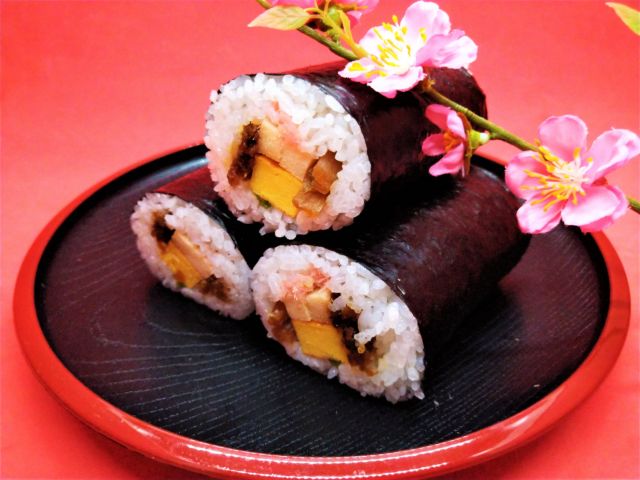Setsubun (せつぶん or 節分) guide
THE BASICS OF SETSUBUN CELEBRATION

February 3 is Setsubun (せつぶん or 節分) in Japan. Japanese people all over Japan hold various ceremonies. This is very basic and generic guide of Setsubun.
Setsubun is "change of the season" used to be celebrated 4 times a year
Setsubun means "change of the season". Japanese people used to celebrate 4 times a year; Spring, Summer, Autumn and Winter.
Ancient Japanese belived that the world tends to become unstable during the transition of the season (Setsubun). Therefore, they used to hold various ceremonies to prevent from all kinds of devil or demons invading the society.
But contemporary busy Japanese people decided to concentrate on Spring Setsubun because Spring represents a new start from winter.
The following day, Feburary 4th, 2011 is called Risshun (Lichun or りっしゅん or 立春) - the beginning of Spring.
Feburary 3 is until 2021 or 2025
Because the date is based on solar system, the date of Setsubun will start changing after 2021 or 2025. Once every 4 years, Setsubun will be Feburary 2nd.
What to do during Setsubun
On the day of Setsubun, the people all over Japan cerebrate Sestubun in different ways. The famous celebrations are Mamemaki (まめまき or 豆まき) and eating Eho-maki (えほうまきお or 恵方巻き).
Mame-maki (まめまき or 豆まき)

Mamemaki means "throwing soybeans". The rules of this ritual are varied depends on the regions.
Basically, the people throw a chunk of soybeans away from your home to scare Oni (Japanese fork devil) or bad luck. Then you throw soybeans (or other stuff) into your house inviting good luck.
Oni wa Soto!
When you throw soybeans outside of your house, you would say "Oni wa soto (おには そと)", which means "Oni out (of my house)".
If you have a kid(s), it's time to dress up (cosplay) like Oni, and have your kids to throw soybeans at you. If you go to the Japanese supermarket or department store, they usually sell cheap Oni masks.
Fuku wa Uchi!
When you throw soybeans inside, you would say "Fuku wa uchi (ふくはうち)", which means "Lucks, coming in".
However, lazy Japanese people no longer want to clean up their room. Many mothers stopped teaching kids to thow soybeans to the inside of the house.
When you go to the famous temple, sometime cerebrities or local politicians throw soybeans to the people. Or Toshi-otoko (としおとこ or 年男) or Toshi-onna (としおんな or 年女) often throw soybeans out.
Toshi-otoko & Toshi-onnna are the men and women who are the age of 12, 24, 36, 48, 60 and (12 years cycle thereafter) during the year.
This 12 years were determined by the Earthly Branches (Juni-shi, じゅうにし, or 十二支), the calendar system based on the orbit of Jupiter.
The people belive that the beginning of the new 12-year cycle could become unstable. Therefore, the potentially unstable Toshi-otoko and Toshi-onna throw soybeans to scare Oni away, and bring the good luck in.
In 2012, the people of Dragon (たつ) who are born in 2000, 1988, 1966 and etc, throw soybeans at the major Mamemaki events.
Eat your mame (soybeans)
At the end of the Mamemaki, you will eat soubeans as much as your new age of the year.
For instance, if you are born in 1980, you will eat 32 soybeans in 2012 because you will turn 32 years old in 2012.
Eating Eho-maki (えほうまき or 恵方巻き)

Eho-maki is a large sushi roll with 7 ingredience.
The ritual was only popular in Osaka area for hundreds years. But it started spreading across Japan in early 2000s (mainly due to the commercialism).
Eho (えほう or 恵方) means "good-luck side (or direction)". Maki (まき or 巻) means "rolls"
When you eat Eho-maki, you must face to Eho (good-luch side). The Eho of 2014 is East North East. You must close your eyes all the time, and you must not talk until you finish eating. While eating, think about what you want to achieve after the spring.
We hope you have a good luck for the rest of the year!